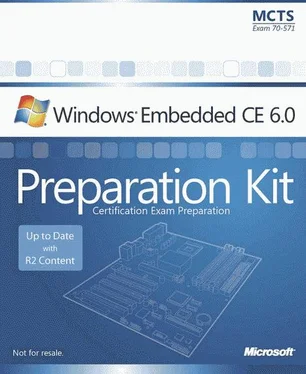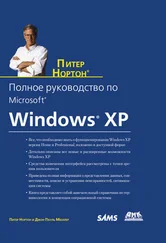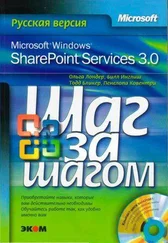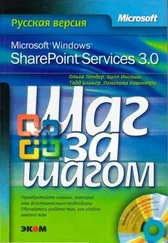Nicolas Besson - Microsoft Windows Embedded CE 6.0 Exam Preparation Kit
Здесь есть возможность читать онлайн «Nicolas Besson - Microsoft Windows Embedded CE 6.0 Exam Preparation Kit» весь текст электронной книги совершенно бесплатно (целиком полную версию без сокращений). В некоторых случаях можно слушать аудио, скачать через торрент в формате fb2 и присутствует краткое содержание. Город: Redmond, Год выпуска: 2008, Издательство: Microsoft, Жанр: Руководства, ОС и Сети, Программы, на английском языке. Описание произведения, (предисловие) а так же отзывы посетителей доступны на портале библиотеки ЛибКат.
- Название:Microsoft Windows Embedded CE 6.0 Exam Preparation Kit
- Автор:
- Издательство:Microsoft
- Жанр:
- Год:2008
- Город:Redmond
- ISBN:нет данных
- Рейтинг книги:5 / 5. Голосов: 1
-
Избранное:Добавить в избранное
- Отзывы:
-
Ваша оценка:
- 100
- 1
- 2
- 3
- 4
- 5
Microsoft Windows Embedded CE 6.0 Exam Preparation Kit: краткое содержание, описание и аннотация
Предлагаем к чтению аннотацию, описание, краткое содержание или предисловие (зависит от того, что написал сам автор книги «Microsoft Windows Embedded CE 6.0 Exam Preparation Kit»). Если вы не нашли необходимую информацию о книге — напишите в комментариях, мы постараемся отыскать её.
Microsoft Windows Embedded CE 6.0 Exam Preparation Kit — читать онлайн бесплатно полную книгу (весь текст) целиком
Ниже представлен текст книги, разбитый по страницам. Система сохранения места последней прочитанной страницы, позволяет с удобством читать онлайн бесплатно книгу «Microsoft Windows Embedded CE 6.0 Exam Preparation Kit», без необходимости каждый раз заново искать на чём Вы остановились. Поставьте закладку, и сможете в любой момент перейти на страницу, на которой закончили чтение.
Интервал:
Закладка:
When working with multiple threads, it is beneficial to implement thread synchronization in order to coordinate access to shared resources within and between processes. Windows Embedded CE provides several kernel objects for this purpose, specifically critical sections, mutexes, and semaphores. Critical sections guard access to resources within a single process. Mutexes coordinate mutually exclusive access to resources shared among multiple processes. Semaphores implement concurrent access by multiple threads to resources within a process and between processes. Events are used to notify the other threads, and interlocked functions for the manipulation of variables in a thread-safe atomic way. If you happen to encounter thread synchronization problems during the development phase, such as deadlocks, use the CeLog event-tracking system and Remote Kernel Tracker to analyze the thread interactions on the target device.
To pass the certification exam, make sure you understand how to use the various synchronization objects in Windows Embedded CE 6.0 R2.
Lesson 4: Implementing Exception Handling
Target devices running Windows Embedded CE include exceptions as part of system and application processing. The challenge is to respond to exceptions in the appropriate manner. Handling exceptions correctly ensures a stable operating system and positive user experience. For example, instead of unexpectedly terminating a video application, you might find it more useful to prompt the user to connect a Universal Serial Bus (USB) camera if the camera is currently disconnected. However, you should not use exception handling as a universal solution. Unexpected application behavior can be the result of malicious code tampering with executables, DLLs, memory structures, and data. In this case, terminating the malfunctioning component or application is the best course of action to protect the data and the system.
After this lesson, you will be able to:
■ Understand the reason for exceptions.
■ Catch and throw exceptions.
Estimated lesson time: 30 minutes.
Exception Handling Overview
Exceptions are events resulting from error conditions. These conditions can arise when the processor, operating system, and applications are executing instructions outside the normal flow of control in kernel mode and user mode. By catching and handling exceptions, you can increase the robustness of your applications and ensure a positive user experience. Strictly speaking, however, you are not required to implement exception handlers in your code because structured exception handling is an integral part of Windows Embedded CE.
The operating system catches all exceptions and forwards them to the application processes that caused the events. If a process does not handle its exception event, the system forwards the exception to a postmortem debugger and eventually terminates the process in an effort to protect the system from malfunctioning hardware or software. Dr. Watson is a common postmortem debugger that creates a memory dump file for Windows Embedded CE.
Exception Handling and Kernel Debugging
Exception handling is also the basis for kernel debugging. When you enable kernel debugging in an operating system design, Platform Builder includes the kernel debugging stub (KdStub) in the run-time image to enable components that raise exceptions to break into the debugger. Now you can analyze the situation, step through the code, resume processing, or terminate the application process manually. However, you need a KITL connection to a development workstation in order to interact with the target device. Without a KITL connection, the debugger ignores the exception and lets the application continue to run so that the operating system can use another exception handler as if no debugger was active. If the application does not handle the exception, then the operating system gives the kernel debugger a second chance to perform postmortem debugging. In this context, it is often called just in time (JIT) debugging. The debugger must now accept the exception and waits for a KITL connection to become available for the debug output. Windows Embedded CE waits until you establish the KITL connection and start debugging the target device. Developer documentation often uses the terms first-chance exception and second-chance exception because the kernel debugger has two chances to handle an exception in this scenario, but they are, in fact, referring to the same exception event. For more information about debugging and system testing, read Chapter 5, "Debugging and Testing the System."
Hardware and Software Exceptions
Windows Embedded CE uses the same structured exception handling (SEH) approach for all hardware and software exceptions. The central processing unit (CPU) can raise hardware exceptions in response to invalid instruction sequences, such as division by zero or an access violation caused by an attempt to access an invalid memory address. Drivers, system applications, and user applications, on the other hand, can raise software exceptions to invoke the operating system's SEH mechanisms by using the RaiseException function. For example, you can raise an exception if a required device is not accessible (such as a USB camera or a database connection), if the user specified an invalid command-line parameter, or for any other reason that requires you to run special instructions outside the normal code path. You can specify several parameters in the RaiseException function call to specify information that describes the exception. This specification can then be used in the filter expression of an exception handler.
Exception Handler Syntax
Windows Embedded CE supports frame-based structured exception handling. It is possible to enclose a sensitive sequence of code in braces ({}) and mark it with the __try keyword to indicate that any exceptions during the execution of this code should invoke an exception handler that follows in a section marked by using the __except keyword. The C/C++ compiler included in Microsoft Visual Studio supports these keywords and compiles the code blocks with additional instructions that enable the system either to restore the machine state and continue thread execution at the point at which the exception occurred, or to transfer control to an exception handler and continue thread execution in the call stack frame in which the exception handler is located.
The following code fragment illustrates how to use the __try and __except keywords for structured exception handling:
__try {
// Place guarded code here.
} __except (filter-expression) {
// Place exception-handler code here.
}
The __except keyword supports a filter expression, which can be a simple expression or a filter function. The filter expression can evaluate to one of the following values:
■ EXCEPTION_CONTINUE_EXECUTIONThe system assumes that the exception is resolved and continues thread execution at the point at which the exception occurred. Filter functions typically return this value after handling the exception to continue processing as normal.
■ EXCEPTION_CONTINUE_SEARCHThe system continues its search for an appropriate exception handler.
■ EXCEPTION_EXECUTE_HANDLERThe system thread execution continues sequentially from the exception handler rather than from the point of the exception.
Exception handling is an extension of the C language, but it is natively supported in C+ + .
Читать дальшеИнтервал:
Закладка:
Похожие книги на «Microsoft Windows Embedded CE 6.0 Exam Preparation Kit»
Представляем Вашему вниманию похожие книги на «Microsoft Windows Embedded CE 6.0 Exam Preparation Kit» списком для выбора. Мы отобрали схожую по названию и смыслу литературу в надежде предоставить читателям больше вариантов отыскать новые, интересные, ещё непрочитанные произведения.
Обсуждение, отзывы о книге «Microsoft Windows Embedded CE 6.0 Exam Preparation Kit» и просто собственные мнения читателей. Оставьте ваши комментарии, напишите, что Вы думаете о произведении, его смысле или главных героях. Укажите что конкретно понравилось, а что нет, и почему Вы так считаете.








